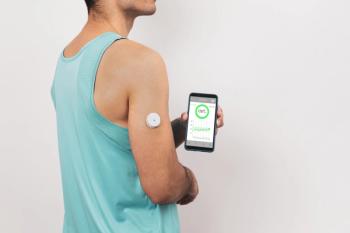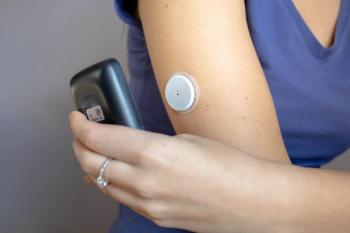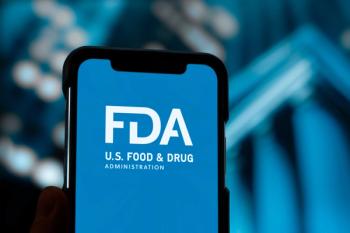
- Drug Topics September 2023
- Volume 167
- Issue 08
Professional CGM Use May Improve HbA1c in Type 2 Diabetes
Use of professional continuous glucose monitoring (CGM) systems in adults with type 2 diabetes (T2D) using noninsulin therapies may improve glycemic control, according to research results published in Clinical Diabetes.1
After individuals with T2D begin insulin therapy, most patients begin to self-monitor their blood glucose levels with a blood glucose meter and test strips. However, this self-monitored method has been demonstrated to be “less helpful for reaching glycemic goals, unless the data are being used to make lifestyle changes or manage medications through active, shared decision-making,” the researchers noted. For these patients, CGMs can be an effective and useful tool to achieve these goals.
Personal CGM systems—those owned by the individual patients—present several cost and access-related limitations. Professional CGM systems—devices owned by clinics and loaned to patients for short-term use—can increase access to patients who otherwise would not be able to afford a CGM. These professional CGMs continuously collect glycemic data and transmit that data to the health care provider, who can then use glycemic patterns to recommend modifications to patient’s treatment regimens and lifestyle.
According to investigators, previous studies of professional CGMs have demonstrated some evidence of improved glycemic control in individuals with T2D. The goal of the current study, a retrospective, observational database study, was to examine the real-world potential value of professional CGM for those with T2D and poor glycemic control while using 2 or more noninsulin antidiabetic therapies.
The primary study outcome was the change in HbA1c, determined using the average of available HbA1c values during the baseline and follow-up periods. Secondary outcomes included the change in the number of medications by class, insulin use during the follow-up period, and the change in HbA1c for patients who did and did not start insulin during the follow-up period.
The study cohort included 15,481 patients with T2D (14,774 non-CGM users). Among the 707 patients using professional CGM, endocrinologists prescribed the CGM in 39.9% of cases; 21.2% were prescribed by an internal or family medicine physician or a nurse practitioner.
Overall, the patients using professional CGM reduced their HbA1c by a mean of 0.83% (8.70% to 7.87%); non-CGM users had a reduction of 0.32% (8.56% to 8.23%). Difference-in-differences estimate was a -0.51% change in HbA1c, which was statistically significant.
A total of 19.8% professional CGM users began using insulin during the follow-up period (15.8% basal insulin), compared with 10% of non-users. HbA1c change among insulin users in the professional CGM group was -0.57%, compared with the slight increase of 0.13% seen in the nonuser group. Difference-in-differences estimate for HbA1c change was -0.71%, which was statistically significant.
“The findings from this study suggest that there is a glycemic benefit of [professional] CGM use for adults with type 2 diabetes who are not on insulin therapy and are taking multiple [oral antidiabetic drugs] and/or noninsulin injectable medications with poor glycemic control,” the researchers wrote.
Study limitations include the relatively small number of professional CGM users vs nonusers, a lack of information about participants’ socioeconomic status or participation in diabetes health coaching programs, and the use of only 3 professional CGM systems (Dexcom G4/G6 Pro, FreeStyle Libre Pro, and Medtronic iPro2); differences among these brands “may influence users’ experience and adherence to wearing the device.”
“Although randomized controlled trials are considered the gold standard for demonstrating the effects of therapeutic interventions, results from retrospective, observational studies of large health data systems can inform clinicians and regulatory agencies about the real-world efficacy of treatment interventions,” the researchers concluded. “Our findings suggest that [professional] CGM use in adults on noninsulin therapies is associated with improved glycemic control and thus may be a tool [health care providers] can use to help patients reach their glycemic goals.”
Disclosures: The authors of this study are employees of Dexcom. For a full list of disclosures, please see the full text of the study.
Reference
1. Nemlekar PM, Hannah KL, Norman GJ. Association between change in A1c and use of professional continuous glucose monitoring in adults with type 2 diabetes on noninsulin therapies: A real-world evidence study. Clin Diabetes. 2023;41(3):359-366. doi:10.2883/cd22-0080
Articles in this issue
about 2 years ago
The Role of Complementary and Alternative Medicine in Pharmacyabout 2 years ago
Assessing and Treating Opioid Use Disorder in Pregnancyabout 2 years ago
Dance With the Girl That Brung Yaabout 2 years ago
Review of FDA Approvals for Pediatric Obesity Managementabout 2 years ago
Gut Health Has Impact on the Skinabout 2 years ago
Biologics Offer Great Results in Treating Psoriasis—At a Costover 2 years ago
In A Post-Dobbs World, Pharmacists Still Face Uncertaintyover 2 years ago
How AI Can Improve Controlled Substance SecurityNewsletter
Pharmacy practice is always changing. Stay ahead of the curve with the Drug Topics newsletter and get the latest drug information, industry trends, and patient care tips.

















































































































